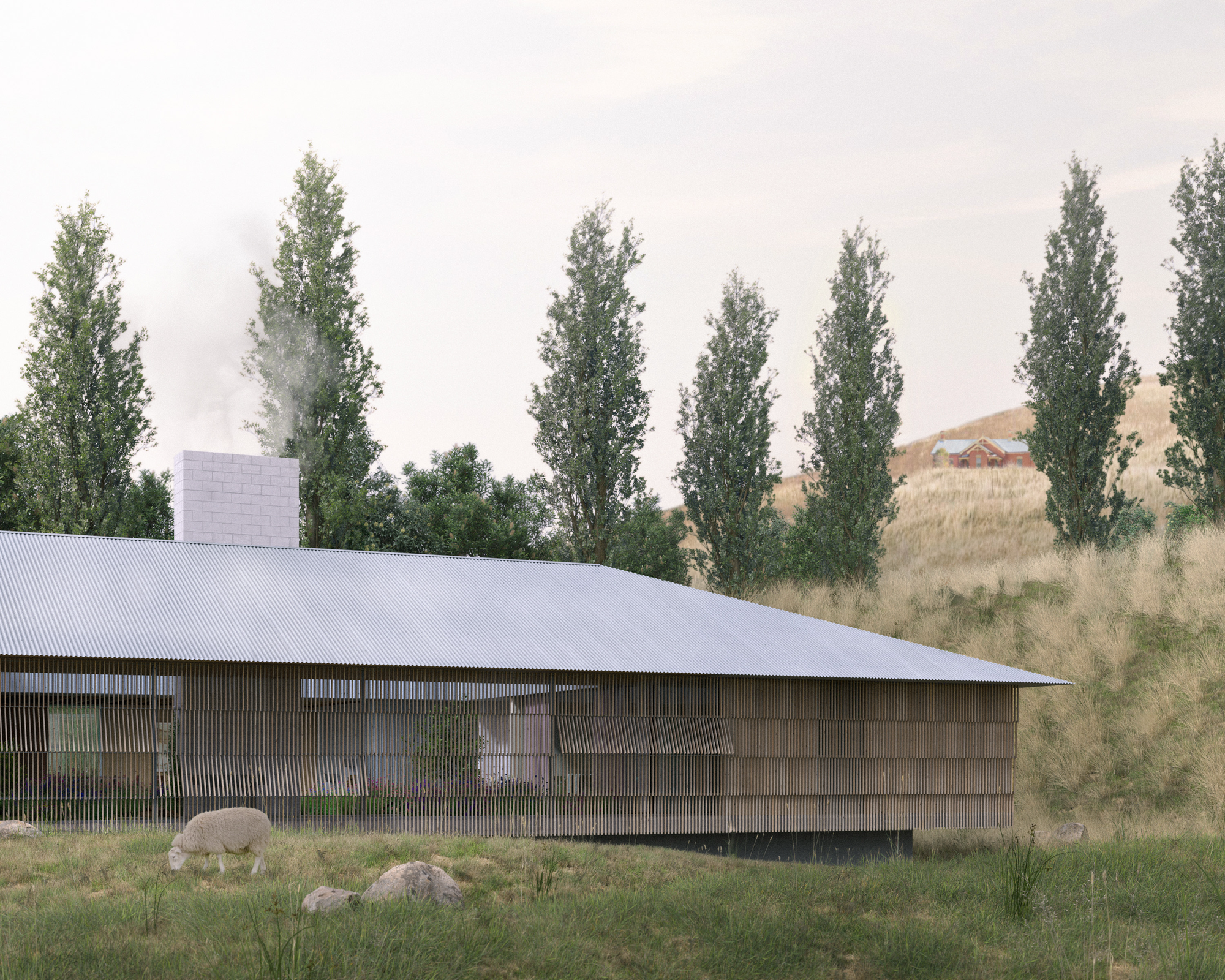
Neil Varcoe was a tech executive in Sydney until he bought an old hotel in Carcoar, NSW, population 272. Here’s the 11th instalment of his monthly column for Galah.
The days have shortened as the cool of autumn settles in our bones. There’s a competition in town to see who caves first and lights their fire. As relative newcomers, we were the first house to crack.
As the region goes into hibernation, we’re heading in the opposite direction. After months waiting on paperwork and reports, we have set a date for construction to begin: 22 April.
Until recently, I thought "pushing shit uphill" was a colourful turn of phrase. It turns out I was wrong. The most significant delay in the past year has been working out how to get shit up a slope.
There is no sewage system in Carcoar. Each house has a stand-alone septic system. This constraint is a blessing because it keeps the town small. It also complicates a build that will scale up to multiple buildings and host events.
The first geotech report would have been more valuable as loo paper. The advice was to “spread it around”. That is not ideal, so the first task was to dig holes for multiple septics connected via pipes and pumps.
Decisions about where to put the pits and how to connect them have delayed the project, but the Battle to Push Shit Uphill has been won and soon we turn the first sod.

We have fought many battles during the past two years but one thing has remained a constant — the warmth of the community of Carcoar. We have felt it from day one.
Just after we bought the property we arranged a time for the handover. The previous owners sent us an email a few days earlier saying "a few people wanted to say, hi". We arrived to find 50 people gathered in the back; cafe tables corralled in the centre of the room. Everyone had bought a plate. The room fell silent as we entered.
We worked our way around the room, my attention split by Molly's chubby kid fingers reaching for another cake. As the funeral sandwiches disappeared and the scones were reduced to crumbs, the room grew quiet again. Pressure was building for a speech. Edwina stepped forward.
She told them we recognised it was their place as much as it was ours. We understood that the gardens were special to them, and that they wanted to access the hotel in some way. Edwina said that we would make those things happen. She also made a promise—that when they spoke, we would listen. We have stayed true to that promise, and the roadmap honours it.
While the earthmovers sort the backend, so to speak, the landscapers will begin replanting the heritage gardens. Each plant has been selected to blend with the streetscape. We have peered over fences and quizzed village gardeners to ensure the trees and shrubs fit in with what’s here and survive for the next generation.
Saltash Farm lives in Edwina's head and in saved Instagram posts shared between us. It's impossible to completely visualise what is yet to be created. There is no #inspo for something entirely new.
Now we must translate the idea of a project into reality. This month, Edwina hands me her Dropbox of dreams to execute.
Her personality is big ideas and messy rooms. I’m large on detail and organisation. It's a constant friction in our marriage, but when it comes to Saltash Farm, it's a superpower. We are the construction version of yin and yang.
The day after our seventh wedding anniversary, we begin building. I will be here and Edwina will be in Sydney as the earthmovers roll up to Saltash Farm. Instead of a bunch of flowers, we will take delivery of hundreds of plants from the local nursery that I will put in the ground by hand. A labour of love.
We must race to get them in before winter. Trees first, buildings next. As they take root, Saltash Farm will grow around them.

RAG Status Reporting is used in project management to update executives quickly using a traffic light system. "Red" means trouble, "amber" signals bumps in the road, and "green" means everything is fine.
Please see the March report below. Drill down on the data and socialise this with your teams. There are lots of moving parts. Let's identify any co-dependencies to optimise resources and produce favourable outcomes.
The project is on track
• The earthmovers will start by demolishing a tiny shed on site — a bargain struck for the “peppercorn” sale of the historic convict-built stables next door. Levels will be established for the cabins and residence and channels built for irrigation.
• The final piece of the puzzle — after the underground poo pumps — was the electricity design. We’re still working out the final details to ensure we have the right mix of solar, gas and electricity to keep the business humming and the world turning.
• Our plants will be sourced from the locally owned Millthorpe Garden Nursery. This supports a local business and ensures the plants are acclimatised to local conditions. Our Mudgee mates, ED Landscapes, will join the race to get the plants into the ground before the first frost.
• We can't just rely on the “build it, and they will come” principle. Discussions have begun with Blayney Shire Council to construct a sign on the highway to draw people into town.
• Keen renovators will know the joy of finding original floorboards under the carpet. Keen renovators will also know it usually involves removing hundreds of nails with pliers. When I'm not required to make decisions or define details, that's where you’ll find me – painstakingly removing miniature nails so the floorboards can eventually be returned to their former glory. We won’t sand out the marks left by the nails. They’re part of the story of this place.